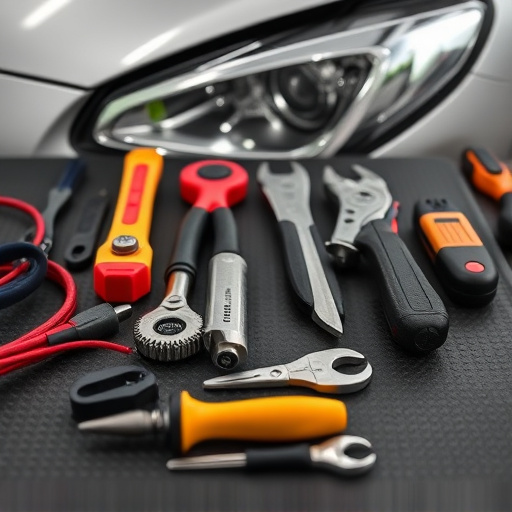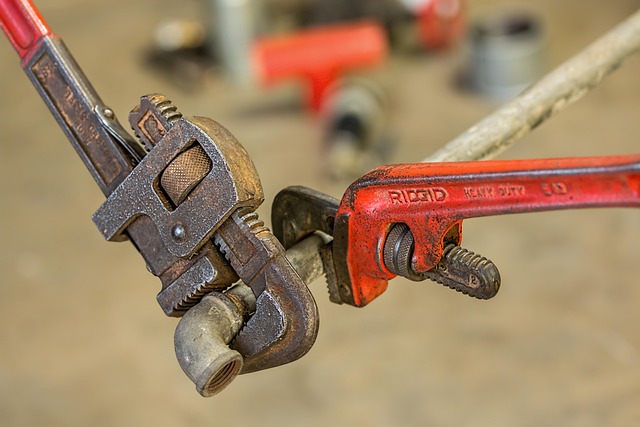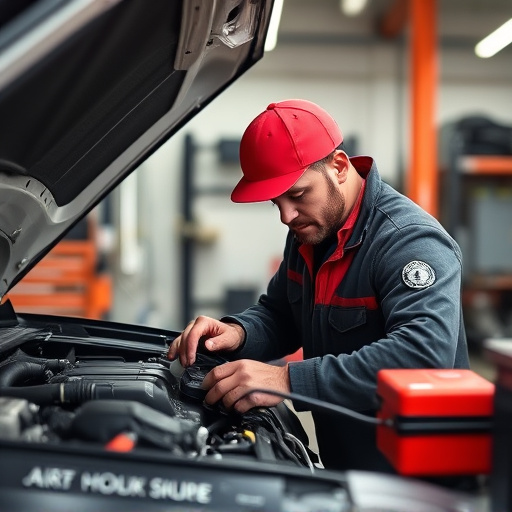Electronic diagnostics collision detection is a vital aspect of modern vehicle safety, integrating with airbags, ABS, and ESC to prevent or mitigate accidents. Auto dent repair specialists need this knowledge to ensure safety systems are correctly calibrated and functioning optimally, addressing sensor malfunctions or communication failures. Advanced tools enable precise detection and repair of issues within complex systems, enhancing road safety for all drivers, including those requiring auto dent repair. Restoring vehicle safety systems efficiently requires these diagnostics, involving data acquisition, fault detection, testing, and calibration to replace or recalibrate components like airbag modules or anti-lock braking sensors.
“In today’s advanced automotive landscape, electronic diagnostics have emerged as a game-changer in vehicle maintenance and safety. This article delves into the intricate world of electronic diagnostics and its pivotal role in collision repair. We explore how these diagnostic tools enable technicians to accurately identify and restore safety systems, ensuring vehicles return to their optimal state post-accident. By understanding the technology behind these processes, folks can appreciate the meticulous work that goes into keeping them safe on the road.”
- Understanding Electronic Diagnostics in Vehicles
- The Role of Electronic Diagnostics in Collision Repair
- Restoring Safety Systems: A Step-by-Step Process Using Electronics Diagnostics
Understanding Electronic Diagnostics in Vehicles

Electronic diagnostics play a pivotal role in modern vehicles, serving as the nervous system that monitors and controls various safety systems. These advanced technologies are designed to detect and diagnose issues within a vehicle’s complex network of sensors, actuators, and control units. By seamlessly integrating with safety features such as airbags, anti-lock braking systems (ABS), and electronic stability control (ESC), electronic diagnostics collision detection provides real-time data that helps in preventing accidents or mitigating their impact.
Understanding the intricacies of these diagnostics is crucial for both vehicle manufacturers and auto dent repair specialists. While an auto collision center primarily focuses on restoring vehicle bodywork after a mishap, knowing how electronic diagnostics work ensures that safety systems are correctly calibrated and functioning optimally. This knowledge is vital to addressing potential issues that could arise from sensor malfunctions or communication failures between different components, ultimately enhancing road safety for all vehicles on the road, including those requiring auto dent repair services.
The Role of Electronic Diagnostics in Collision Repair

In today’s modern automotive landscape, electronic diagnostics play a pivotal role in collision repair processes, ensuring that vehicle safety systems are restored to optimal condition. Gone are the days when mechanics solely relied on manual inspections and trial-and-error methods. Advanced diagnostic tools have revolutionized the way we approach vehicle repairs, especially after accidents. These electronic systems enable technicians to accurately pinpoint issues within complex networks of sensors, actuators, and control modules.
For instance, in a Mercedes-Benz repair scenario involving frame straightening, electronic diagnostics facilitate the identification of any discrepancies in the vehicle’s computer systems. Whether it’s a sensor detecting misalignment or an actuator not functioning correctly, these tools provide real-time data, ensuring that every repair is precise and comprehensive. This level of precision is crucial for maintaining the integrity of safety features such as airbags, anti-lock braking systems (ABS), and electronic stability control (ESC), ultimately enhancing road safety for all drivers.
Restoring Safety Systems: A Step-by-Step Process Using Electronics Diagnostics

Restoring Safety Systems: A Step-by-Step Process Using Electronics Diagnostics
The process of restoring safety systems in vehicles heavily relies on advanced electronic diagnostics tools. These sophisticated devices act as the eyes and ears, identifying even the subtlest anomalies within complex safety networks. By thoroughly scanning every sensor, module, and circuit, technicians can pinpoint exact issues, ensuring no stone is left unturned during vehicle restoration.
Through a systematic approach, electronic diagnostics guide repair services from initial assessment to final verification. This meticulous process involves several steps: data acquisition, fault detection, testing, and calibration. Each stage requires specialized equipment and expert knowledge to interpret results accurately. Once identified, safety system components, whether it’s an airbag module or anti-lock braking sensor, are carefully replaced or recalibrated, ensuring they function optimally. This meticulous vehicle restoration process not only enhances safety but also guarantees that every aspect of a car’s safety systems operates in harmony, ready to respond swiftly during unexpected collisions.
Electronic diagnostics have revolutionized collision repair by enabling technicians to accurately diagnose and restore vehicle safety systems. By leveraging advanced technology, professionals can navigate complex systems with precision, ensuring that each component functions optimally after an accident. This process not only enhances vehicle safety but also promotes efficient repairs, ultimately benefiting both repair shops and drivers seeking reliable transportation post-collision.














